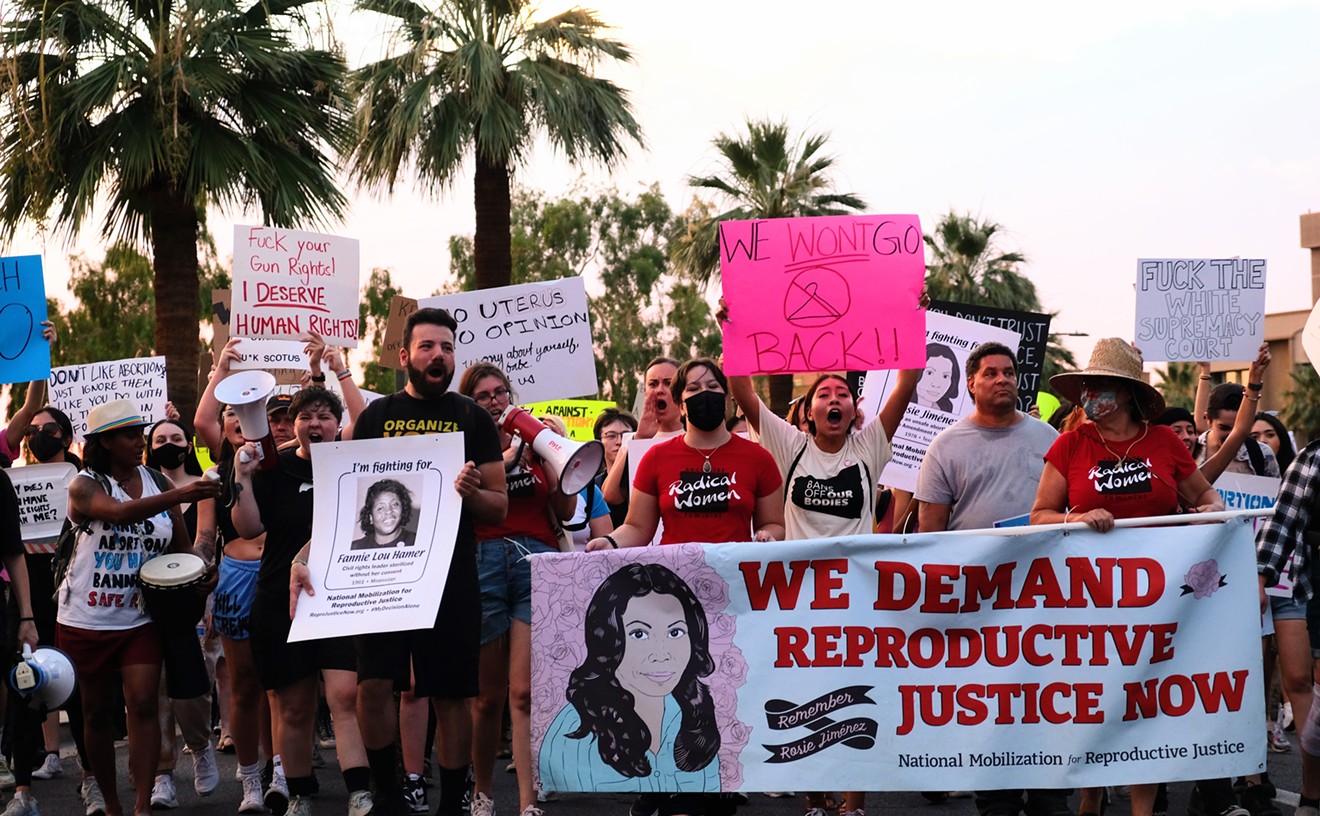I got to Beth Israel Cemetery an hour early. Brad Funk's coffin was already sitting under a canopy near the main gate with an American flag draped over it.
About fifteen minutes before the service was scheduled to begin, the crowd arrived.
They came in flashy cars that formed a virtual caravan as they headed slowly southward on 35th Street. When they reached the cemetery's entrance gate, they all made a left-hand turn in front of traffic and entered on the narrow, tree-shaded lane.
Their destination was just inside the cemetery gate on the right-hand side. This was to be the funeral service for Brad Funk, 57, the shadowy figure of the 1976 Don Bolles murder case.
Whenever students of the Bolles car bombing gather, they are sure to bring up Brad Funk's name. Some are still convinced Funk ran the operation. Funk was the only one in town who openly admitted his hatred for Bolles. Funk also had what any adult sociopath would consider good reasons for killing him.
Bolles was no saint. There are a lot of people around who were not terribly saddened the day the bomb exploded.
Funk's family co-owned all the dog tracks in the state in a partnership with notorious Emprise Corporation. Bolles had made a specialty of writing stories that harassed the dog-track owners.
The stories were so effective with Bolles' pal, Burton Barr, that the legislature eventually forced the Funks to sell out. The legislature voted the bill on the very morning Bolles was blown up.
Bolles also was much too friendly with Funk's ex-wife. And one of Bolles' weaknesses was that he both kissed and told what came his way on the job.
The Funks were in the process of fighting over child-support payments and Bolles went so far as to show up at hearings to stare Brad Funk down.
Funk felt Bolles was out to destroy not only his family's racetrack business but also his family. Funk filed a lawsuit against Bolles, he even hired a private detective and spent $16,000 trying to dig up dirt on Bolles.
The investigator, an old military school classmate named George Johnson, checked all the public records. He even bought confidential information about Bolles from banks and telephone company workers.
Funk, a heavy drinker at the time, hung out in the same central-area bars as John Harvey Adamson. Funk and Adamson also knew each other from the dog tracks.
Adamson was convicted of planting the bomb in Bolles' car and now sits on death row in the Florence state prison.
When the bomb went off, Funk fled to San Diego and a drying-out spa to avoid police questioning.
Here's a significant point.
A man who was Funk's roommate in the dryout center revealed that he and Funk went shopping one afternoon. During the course of going through stores, Funk led the way into a hobby shop. While there, Funk pointed out the type of explosive device used to blow up Bolles.
Despite Funk's involvement with both Bolles and Adamson, Funk never was questioned by police. And only years later did Funk talk about Bolles with Paul Rubin of New Times.
"If a newspaper smears someone's name over the front page for a solid year," Funk told Rubin, "and then the reporter gets blown up in a car, where's the first place you're gonna look?"
Add to this the fact that just before the bombing, Bolles told friends he was heading to San Diego where he hoped to uncover charges of child molesting made in a sealed deposition by Funk's former wife.
Funk's funeral was actually well- attended. The mourners were mostly affluent men who made their living in the racetrack business. No friend got up to speak about Funk's attributes. The mourners did not appear even to speak to each other.
Perhaps they had been recipients of a letter Funk sent out not long after Bolles' murder. In the letter, Funk urged his relatives and friends to make lists of both their enemies and their friends. He had closed the letter by urging them in capital letters: "BE PARANOID." Wearing dark sunglasses and standing apart from the crowd was former State Representative George Weisz. He worked with the original Bolles investigating team.
Recently, Weisz gave up politics. He did so to take a job investigating the Bolles case for Attorney General Bob Corbin's office.
The tableau created by Weisz' presence reminded me of that great scene from The Barefoot Contessa when Humphrey Bogart stares from a far-off spot at the funeral of Ava Gardner and tells the story of each mourner's connection with the body inside the coffin.
Funk's coffin was draped with an American flag, which was later presented to a woman sitting in the front row of folding chairs.
The rabbi who conducted the service made it clear he didn't know Funk personally. That did not, however, keep him from announcing that Funk was a great patriot and a man much loved by his friends.
I walked over to Weisz, whom I had met during the Evan Mecham hearings.
"Do you know any of these people?" I asked.
"I really couldn't say." "Why are you here?" "I really couldn't say." I asked Weisz what he was doing for lunch. Weisz said he was already booked up with a Chicago Tribune investigative reporter.
I can take a hint. I walked away.
Sometimes, you can tell something about a man by who shows up at his funeral.
When Bill Veeck, the onetime owner of the Chicago White Sox, died, his funeral was packed with ballplayers, professors, charity workers, even cops and firefighters and building inspectors.
This was a furtive, secretive bunch at the Funk funeral. Their cars were showy and their necks and wrists were covered with gold jewelry. Their clothes were flashy.
There was a Rolls Royce Corniche with the license plates "PRESH."
There were a half dozen Mercedes- Benz four-door jobs and a scattering of BMWs and a trio of the newest darling yuppie vehicle, the Jeep Wagoneer. They were monied types, these funeralgoers, the kind who clearly reveled in demonstrating their bank accounts. The fleshy, overdressed men and the women in their pancake make-up and fur coats were here to say good-by to Funk.
Funk died of a heart attack while attempting to negotiate his glittering Jaguar into a Biltmore-area parking space.
His death puts us just one step farther from ever solving the case.
I would like to believe Attorney General Corbin is sincere about this new grand jury he has formed to study the Bolles matter.
But I can't believe anything Corbin says. To him and his ilk, the Bolles case is kept on hand to be trotted out when there's need for some good ink.
To my way of thinking, Corbin could do himself a lot more good if he would pay Charles Keating back the $55,000 from the last campaign. Corbin accepted the money even though he was running without opposition. If Corbin performed that one simple act.
Perhaps then, I wouldn't feel it necessary to keep asking why Corbin, with all the vast resources of his office, never lifted a hand against Keating.
Doesn't that bother anyone else?










